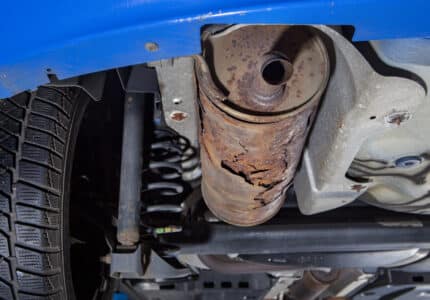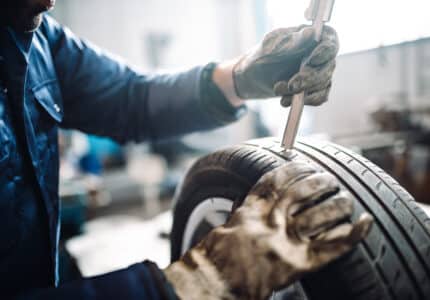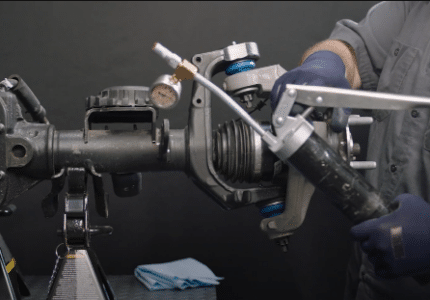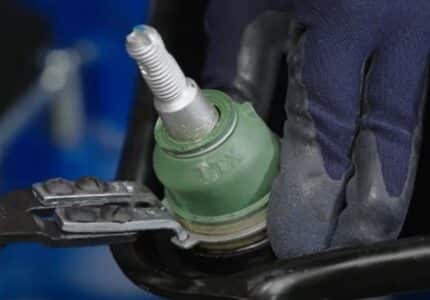HOW TO FIX MEMORY STEER IN POPULAR DODGE & FORD APPLICATIONS
You know that feeling when the steering wheel doesn’t naturally return to center after completing a turn? That’s memory steer. It can also be characterized by a “steering wander” effect, where you feel like you keep having to correct the wheel as you drive.
When you experience memory steer, what is actually happening is the steering knuckle pivot points are binding and restricting the free movement of the knuckle. Memory steer is particularly problematic on platforms with solid front axles, such as the DANA 60 Ford F-250/350 and the AAM 9.25” Dodge/RAM.
Our latest on-demand webinar reveals what you need to know about fixing memory steer in these popular applications. Here is a preview of what we cover:
The Advantages of Solid Front Axles
You know that feeling when the steering wheel doesn’t naturally return to center after completing a turn? That’s memory steer. It can also be characterized by a “steering wander” effect, where you feel like you keep having to correct the wheel as you drive.
Solid front axles, also known as beam, rigid or fixed axles, have many advantages over independent front suspension (IFS) systems. They are great for heavy loads, a well as articulation of travel for applications such as rock crawling. They are also easy to repair, upgrade, and modify or lift without greatly affecting the vehicle’s geometry.
Memory Steer in the DANA 60 Ford F-250/F-350
Memory steer in these applications is typically caused by:
• Not removing and cleaning the camber/caster sleeve.
• Not properly cleaning the seating area when pressing in ball joints.
• Not torquing ball joint studs in sequence and to proper specifications.
Prevent Memory Steer By:
Cleaning: Clean and debur all seating and mating areas after removing old ball joints from the knuckle, to ensure replacement ball joints will press in all the way.
Reconditioning or replacing: Remove and clean the caster/camber sleeves and replace if required. Also clean the sleeve bore holes to ensure free movement.
Ensuring proper torquing: Tighten the ball joints in sequence and to the proper specifications.
Verifying smooth operation: After tightening ball joints, verify that the knuckle swings easily and smoothly from stop to stop.
Memory Steer in the 2003-2021 Dodge/Ram 2500 & 3500
Memory steer in Dodge/Ram platforms with an AAM 9.25” front fixed axle is typically caused by:
• Not torquing the ball joints to specification and in sequence.
• Angular forces on the upper ball joint, causing binding.
Prevent Memory Steer with Mevotech’s TXMS25506 Solution:
Over time the OEM upper and lower ball joints on these platforms come out of alignment. Improper tightening can also be a factor. The constant off-centre loading on the bearings can lead to binding, causing memory steer and early part failure.

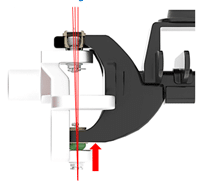
Mevotech’s TXMS25506 with a patented snap-in bearing alleviates the effects of memory steer. Featuring an oversized bearing made of durable sintered metal, Mevotech’s solution has a large contact area and is engineered to accommodate the challenges of a worn knuckle. The design enables a pivoting motion, which permits the pin to re-align to prevent binding. Overall, the TXMS25506 withstands greater loads in all ranges of movement and provides extended part life.
TXMS25506 Memory Steer Solution

Summary
Solid axles, as found in certain Dodge/RAM and Ford applications, may develop imperfections over time that cause memory steer. Want to know more? Watch the webinar, where our experts run through upper and lower ball joint diagnostic procedures for these popular platforms.

